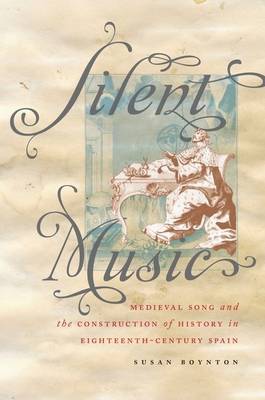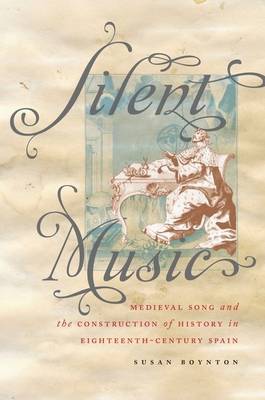
- Retrait gratuit dans votre magasin Club
- 7.000.000 titres dans notre catalogue
- Payer en toute sécurité
- Toujours un magasin près de chez vous
- Retrait gratuit dans votre magasin Club
- 7.000.0000 titres dans notre catalogue
- Payer en toute sécurité
- Toujours un magasin près de chez vous
Silent Music
Medieval Song and the Construction of History in Eighteenth-Century Spain
Susan Boynton
84,45 €
+ 168 points
Description
Silent Music explores the importance of music and liturgy in an eighteenth-century vision of Spanish culture and national identity. From 1750 to 1755, the Jesuit Andrés Marcos Burriel (1719-1762) and the calligrapher Francisco Xavier Santiago y Palomares (1728-1796) worked together in Toledo Cathedral for the Royal Commission on the Archives, which the government created to obtain evidence for the royal patronage of church benefices in Spain. With Burriel as director, the Commission transcribed not only archival documents, but also manuscripts of canon law, history, literature, and liturgy, in order to write a new ecclesiastical history of Spain. At the center of this ambitious project of cultural nationalism stood the medieval manuscripts of the Old Hispanic rite, the liturgy associated with Toledo's Mozarabs, or Christians who had continued to practice their religion under Muslim rule. Burriel was the first to realize that the medieval manuscripts differed significantly from
the early-modern editions of the Mozarabic rite. Palomares, building on his work with Burriel, wrote a history of the Visigothic script in which he noted the indecipherability of the music notation in manuscripts of the Old Hispanic rite. Palomares not only studied manuscripts, but also copied them, producing numerous drawings and a full-size, full-color parchment facsimile of the liturgical manuscript Toledo, Biblioteca Capitular 35.7 (from the late eleventh or early twelfth century), which was presented to King Ferdinand VI of Spain. Another product of this antiquarian concern with song is Palomares's copy (dedicated to Bárbara de Braganza) of the Toledo codex of the Cantigas de Santa Maria. For both men, this silent music was invaluable as a graphic legacy of Spain's past. While many historians in the Spanish Enlightenment articulated the idea of the modern nation through the study of the Middle Ages, Burriel and Palomares are exceptional for their treatment of musical notation as an
object of historical study and their conception of music as an integral part of history.
the early-modern editions of the Mozarabic rite. Palomares, building on his work with Burriel, wrote a history of the Visigothic script in which he noted the indecipherability of the music notation in manuscripts of the Old Hispanic rite. Palomares not only studied manuscripts, but also copied them, producing numerous drawings and a full-size, full-color parchment facsimile of the liturgical manuscript Toledo, Biblioteca Capitular 35.7 (from the late eleventh or early twelfth century), which was presented to King Ferdinand VI of Spain. Another product of this antiquarian concern with song is Palomares's copy (dedicated to Bárbara de Braganza) of the Toledo codex of the Cantigas de Santa Maria. For both men, this silent music was invaluable as a graphic legacy of Spain's past. While many historians in the Spanish Enlightenment articulated the idea of the modern nation through the study of the Middle Ages, Burriel and Palomares are exceptional for their treatment of musical notation as an
object of historical study and their conception of music as an integral part of history.
Spécifications
Parties prenantes
- Auteur(s) :
- Editeur:
Contenu
- Nombre de pages :
- 240
- Langue:
- Anglais
- Collection :
Caractéristiques
- EAN:
- 9780199754595
- Date de parution :
- 17-11-11
- Format:
- Livre relié
- Format numérique:
- Genaaid
- Dimensions :
- 236 mm x 163 mm
- Poids :
- 496 g

Les avis
Nous publions uniquement les avis qui respectent les conditions requises. Consultez nos conditions pour les avis.






